Bikes in the Sweet Spot
The sweet spot in tri bikes is in the flow-up from platforms like Cervelo's P3, and the flow-down from superbikes made mortal.
Examples? Quintana Roo's PRfive, the Clark Kent to its PRsix. The alter ego to Felt's IA 1 thru IA 4 is it's standard fork/stem IA 16, 14 (pictured below), and 10. Orbea has a bike called the OMP, and it's built down to an affordable price. Argon 18's E-117 would have been anybody's idea of a top-caliber tri bike 3 or 4 years ago. The E-119 outranks it, but, how much of a demotion is it?
What do all these bikes have in common? You can work on them. You can actually see the brakes, which is the first step toward adjusting them. They use normal stems. Here's another thing they have in common: if they are less aerodynamic than their super cousins, it's not by much.
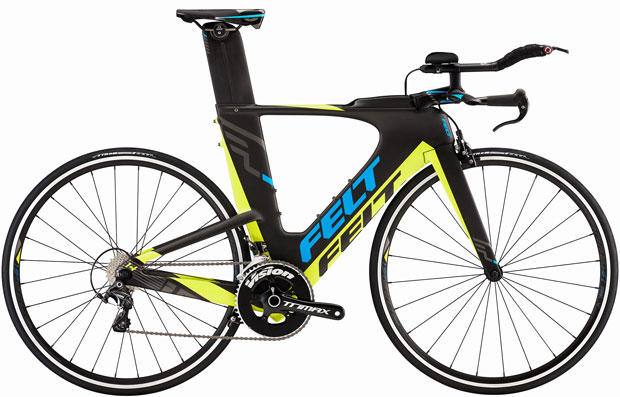
Let's take a look at two of these bikes, and we'll look at several more in the coming days before we're through.
How do they stand up aerodynamically? I'm going to assume the IA double-digits are not far off from the IA single-digits, and this is probably more the case when the IA 10 thru 16 are dolled-up with a nice aero center pull brake and wheels that match the rest of its front end. If you make this assumption then we can put together two pieces of information. QR's tunnel data from its PRsix has it right in there with the big boys, slightly behind the Speed Concept and P5, and just ahead of the Shiv.
Felt's tunnel numbers show its IA also a little behind the P5, but only in a straight-ahead wind. In a yaw the IA begins to best the P5, and the greater the yaw the better it does, which makes sense when you consider all the surface area on an IA.
As far as I can tell, the IA is about even with the PRsix until you start to see yaws of 7.5 degrees and then, if I'm interpreting these charts correctly, the IA does better. The PRfive on the other hand is going to be 350g to 500g lighter in the frame, fork and seat post. This makes transparent the philosophical difference between Felt and QR when it comes to tri bikes. Felt believes that yaws greater than 7.5 degrees are too common not to consider as design inputs. QR is willing to give up performance at those wider yaws if it can deliver a low frame weight.
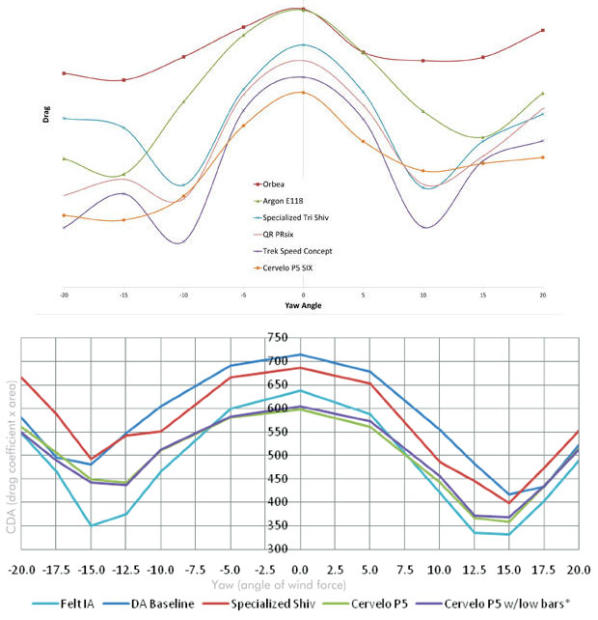
What are the differences between these bikes and their superbike cousins? In the case of the Felt, it's the front end, fork and stem. With the PRfive it's only the stem and the frame lay-up. Yes, of course, the components will change, but the meat of these bikes is the frame.
Now, that's not entirely true. On Slowtwitch was a piece a month ago about the inside of bike frames, the stuff you don't see. Felt's FRD frames are extremely laborious to make, they're lighter and stiffer, and this is the sort of process that generates an S Works decal on a bike that otherwise looks exactly like a bike that bears a Specialized decal. The IA 1 uses the FRD process. The IA 4 does not. Aerodynamically it's identical, but its weight is not. The IA 10, 14 and 16 are going to use this same Aero Tri UHC Advanced Carbon Fiber schedule and while I don't know what that precisely means, it sounds pretty good.
The IA 16 starts out costing just under $3,000. For an extra $1000 you can buy an IA 14 and you will move to Ultegra derailleurs and a little up-spec'ing of FSA and Vision crank and brake calipers. Let's imagine spending that $1000 differently. First, I might ditch the FSA front caliper and replace it with a TriRig. Felt makes perfectly fine aerobars, so they're not an upgrade target unless you personally find them an issue. What I might change are the extensions. I'm very picky about extension shapes and tactile feel. The $1000 difference between the 14 and 16 also includes a different rail on the Prologo saddle but will you like that saddle, regardless of rail? If you're going to change the saddle to a Cobb or ISM anyway, who cares what came spec'd on the bike? Same with cranks. Are you going to stick with the stock crank arm length and ring sizes? Are you a fan of Rotor or Osymetric rings? Or of a particular crank-based power meter?
If you make all these changes just about the only meaningful difference between the IA 14 and 16 are the derailleurs and, honestly, there is no shifting difference you could divine. Is there any performance difference? Minor. Maybe a longevity difference.
In my mind, the IA 16, the way I would set it up for me, new front brake, extensions, maybe crank, a new saddle, is somewhere between a $3600 and $4000 bike, not including what I might choose for race wheels. This fits very nicely inside of that price window you all indicate is your sweet spot.
There is one thing more I'd like to mention about these new IA models. The stem is designed to integrate with the frame. I'll be writing more about tri bike stems in the coming days, but Felt is the one company making a mortal version of a superbike with a stem congruent with the frame.
How does the PRfive compete with this? It starts out at $3,700 for the Ultegra package, which means it comes with Ultegra derailleurs. But it doesn't have Ultegra brake calipers, it's got Shimano 105 calipers but they're pretty nice. It's a shame to pull off the front to replace it with the TriRig, but it'll have to go. The aerobars are first-rate Profile T4 but the extensions I'll replace with carbon T3s. It's got an ISM saddle so there's a fighting chance this is what I'll end up with, i.e., no upgrade needed.
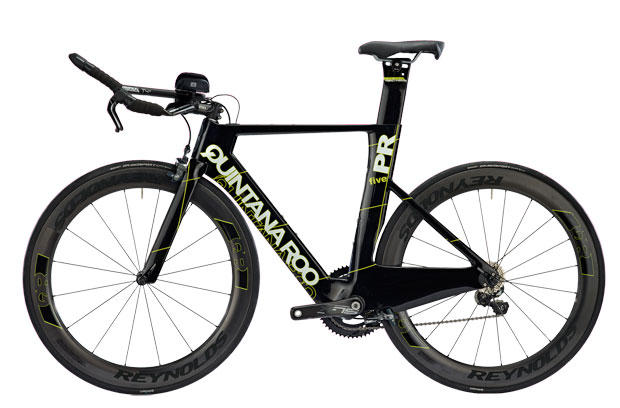
This QR bike as I'll want it will come in at about $4000 not counting race wheels, so it'll probably cost about $400 more than the Felt IA 16 souped-up, but then the PRfive will come with Ultegra derailleurs.
The PRfive (a more expensive, electronically shifted bike is pictured) is shown above in a posture you'll almost never see. Bikes are never photoed pointing this way. They're always photoed drive side, so you can see the drivetrain. QR photos its bikes both drive side and off side because it wants you to see what it means by Shift technology. This is its doctrine put into practice of shifting the air from the drive to the off side. The one place in the bike where QR does present to the wind a lot of surface area is in this off side chain stay.
QR builds this bike with one other ethic in mind that bears mentioning. There is a bit of backlash against bikes that are hard to work on, travel with, assemble. It's maddening to dig into a bike only to find out that buried in there somewhere is a Torx bolt and you don't have that Torx wrench. Make a decision, already! Allen or Torx! So QR builds its bikes very easy to work on, and very easy to soup up. It isn't in love with its proprietary components. Its under-chainstay brake is a standard Shimano direct-mount, so if you want to put on a Magura RT8 TT hydraulic brakeset front and rear, or the new direct mount center pull calipers from FSA or Eecycleworks, you may do so.
Both bikes have top tube bosses or built-in accommodation for food storage.
To me, this is where value lies. You're finally seeing bikes that might, maybe have outstripped the P3 in aerodynamics, that often will have replaceable derailleur hangers. By the time you put a front AND rear aero caliper on your bike, and a rideable saddle, and a carbon extension, your P2 is going to be up there in price similar to these other bikes. In short, and yes it's taken awhile, the world has caught up to Cervelo. These two bikes above are examples of this.
Next in this series are more bikes that, ready to ride, post-upgrades, can be had in the mid-to-high $3000s yet are, like these two bikes above, capable of winning any no-draft triathlon in any racing category.


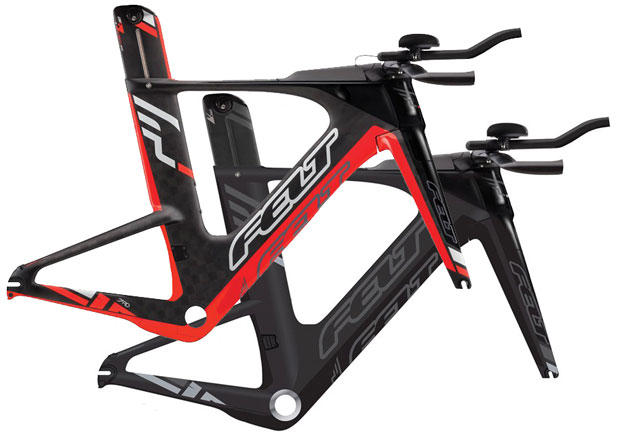
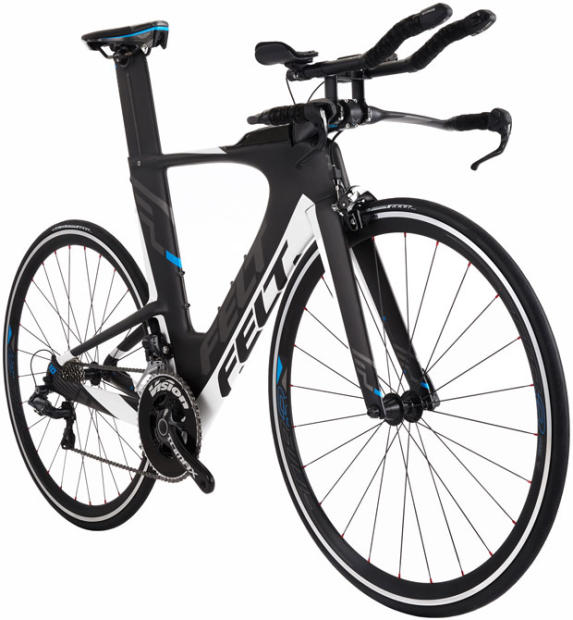
Start the discussion at slowtwitch.northend.network